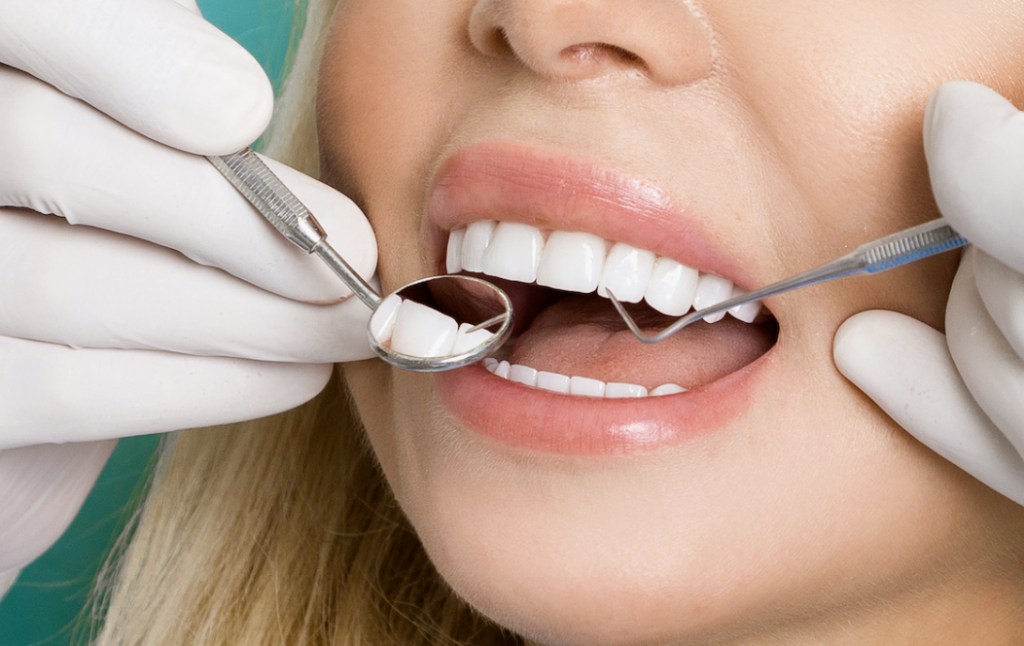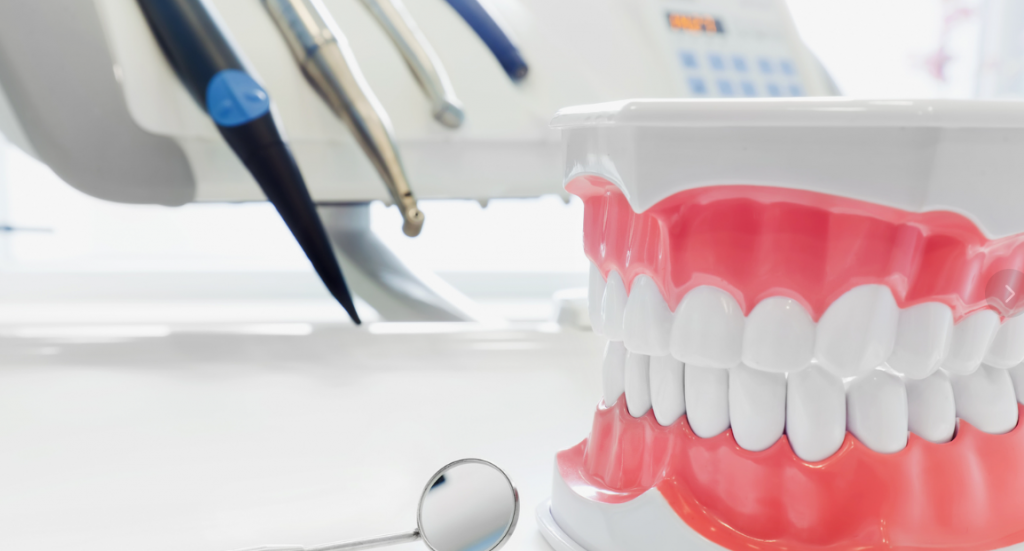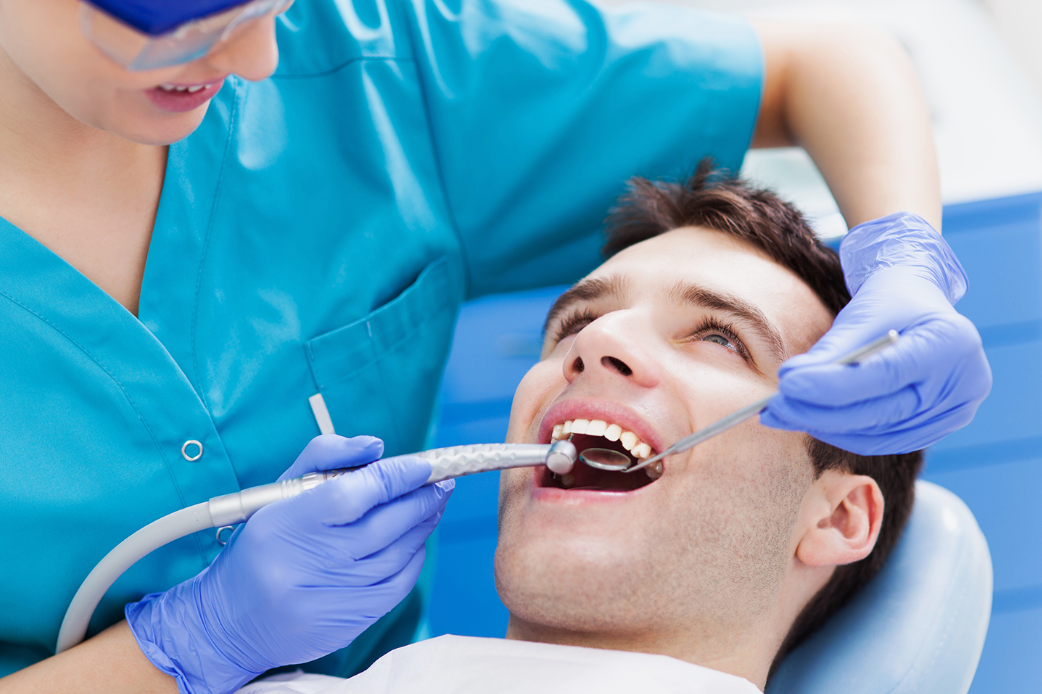A perfect smile is more than just a physical attribute; it has a significant impact on our overall well-being and confidence. But what exactly contributes to a perfect smile? Let’s delve into the scientific factors that play a crucial role in creating that captivating smile we all desire.
At the Dental Estetik Klinik, paramount importance is placed on dental health as a pivotal factor in achieving a flawless smile. Emphasizing the significance of good oral hygiene and precise tooth alignment, the clinic underscores the necessity of regular brushing, flossing, and dental check-ups to uphold optimal oral health. These practices contribute to the maintenance of healthy teeth and gums, ensuring a radiant and appealing smile. Furthermore, the clinic recognizes the integral role of tooth alignment in smile aesthetics, affirming that properly aligned teeth not only foster a harmonious smile but also enhance facial symmetry and overall attractiveness.
Facial muscles also play a significant role in creating a perfect smile. The coordination of these muscles is responsible for the genuine and attractive nature of our smiles. When we smile, specific facial muscles contract, lifting the corners of our mouth and creating a warm and inviting expression. Understanding the science behind these muscle movements allows us to achieve a genuine smile that radiates confidence and positivity.
Smiling not only enhances our physical appearance but also has a profound impact on our psychological well-being. Scientific research has shown that smiling can boost our mood, reduce stress, and improve social interactions. When we smile, our brain releases endorphins and serotonin, often referred to as “feel-good” chemicals. These chemicals promote feelings of happiness and well-being, making us feel more confident and positive in our daily lives.
In conclusion, the science behind a perfect smile encompasses various factors, including dental health, facial muscle coordination, and the psychological benefits of smiling. By understanding these scientific factors, we can unlock the potential of our smiles, boosting our overall well-being and confidence.
Dental Health and Smile Aesthetics

Dental health plays a crucial role in achieving a perfect smile. Good oral hygiene is not only important for maintaining healthy teeth and gums, but it also has a direct impact on the overall aesthetics of your smile. When your teeth are clean and free from plaque and tartar, they appear brighter and more attractive.
Furthermore, proper tooth alignment is another key factor in smile aesthetics. Crooked or misaligned teeth can affect the symmetry and balance of your smile. Orthodontic treatments, such as braces or clear aligners, can help correct dental misalignments, resulting in a straight and harmonious smile.
It is important to note that dental health and smile aesthetics are closely correlated. By prioritizing good oral hygiene practices and seeking appropriate dental treatments, you can enhance both the health and beauty of your smile.
The Role of Facial Muscles
The role of facial muscles in creating a perfect smile cannot be underestimated. These muscles are responsible for the movements and expressions that contribute to an attractive and genuine smile. When we smile, a complex coordination of various facial muscles takes place, resulting in a harmonious and appealing expression.
One of the key muscles involved in smiling is the zygomaticus major, which pulls the corners of the mouth upward. This muscle, along with the orbicularis oculi muscle around the eyes, creates the characteristic “crow’s feet” wrinkles that indicate a genuine smile. Additionally, the levator labii superioris muscle helps raise the upper lip, while the risorius muscle assists in stretching the lips horizontally.
To achieve a perfect smile, it is important to have balanced muscle coordination. Strong and well-toned facial muscles contribute to a more attractive smile, as they help maintain the proper alignment of the lips and teeth. Regular facial exercises and practicing smiling can help improve muscle tone and coordination, leading to a more confident and appealing smile.
The Psychology of Smiling
The act of smiling goes beyond a simple facial expression. It has a profound impact on our psychological well-being and the way we interact with others. Scientific research has shown that smiling can have a positive effect on our mood, social interactions, and overall happiness.
When we smile, our brain releases endorphins and serotonin, often referred to as the “feel-good” chemicals. These neurotransmitters are responsible for feelings of happiness and well-being. By simply smiling, we can trigger the release of these chemicals, instantly boosting our mood and creating a sense of positivity.
Furthermore, smiling is contagious. When we smile at someone, it activates mirror neurons in their brain, leading them to smile back. This simple act of exchanging smiles can create a ripple effect, spreading happiness and fostering positive social interactions.
Studies have also shown that smiling can have a significant impact on our relationships and how others perceive us. A genuine smile is seen as a sign of trustworthiness, warmth, and approachability. It can help build rapport, strengthen connections, and enhance social bonds.
Moreover, smiling can have a transformative effect on our own self-perception. When we smile, even if we don’t initially feel happy, our brain receives feedback from our facial muscles and interprets it as a positive emotion. This can lead to a shift in our mindset, making us feel more optimistic and confident.
In conclusion, the psychology of smiling is a fascinating field of study that highlights the immense benefits of this simple yet powerful gesture. By understanding the impact of smiling on our mood, social interactions, and overall happiness, we can harness its potential to improve our well-being and create positive connections with those around us.
The Science of Smiling and Happiness
Have you ever wondered why a smile can instantly brighten your mood and make you feel happier? It turns out that there is a scientific explanation behind this phenomenon. When you smile, your brain releases endorphins and serotonin, which are neurotransmitters responsible for feelings of happiness and well-being.
Endorphins are often referred to as the “feel-good” chemicals because they act as natural painkillers and mood boosters. When you smile, the muscles in your face send signals to your brain, triggering the release of these endorphins. This can help reduce stress, alleviate pain, and improve your overall mood.
Serotonin, on the other hand, is a neurotransmitter that regulates mood, appetite, and sleep. When you smile, the release of serotonin in your brain can enhance your sense of well-being and promote a positive outlook on life. It can also help reduce symptoms of depression and anxiety.
So, the next time you’re feeling down, try putting on a smile. Not only will it make you feel better, but it can also have a positive impact on those around you. Smiling is contagious, and when you share your smile with others, you can spread happiness and create a more positive and uplifting environment.
In conclusion, the science of smiling and happiness is rooted in the release of endorphins and serotonin. By understanding the relationship between smiling and these brain chemicals, we can harness the power of a smile to improve our well-being and create a happier world.
The Power of a Genuine Smile
The power of a genuine smile goes beyond just a simple expression. It has a profound impact on our social interactions and the connections we form with others. But what exactly makes a smile genuine? Let’s delve into the science behind it.
When we smile genuinely, specific facial muscles come into play. The zygomatic major muscle, located in the cheeks, is responsible for the upward movement of the corners of our mouth. Simultaneously, the orbicularis oculi muscle around the eyes contracts, creating those charming crow’s feet. These muscle movements are crucial in distinguishing a genuine smile from a forced or fake one.
But why does a genuine smile matter? Well, it turns out that a genuine smile can create trust and positive connections with others. When we genuinely smile, it sends a signal to those around us that we are approachable, friendly, and sincere. This can lead to more meaningful interactions and help build strong relationships.
Research has shown that when we smile, our brain releases endorphins and serotonin, the “feel-good” chemicals responsible for happiness and well-being. So, not only does a genuine smile make us feel good, but it also has a positive impact on our mood. It can even be contagious, spreading positivity to those around us.
In summary, a genuine smile is a powerful tool that can create trust, foster positive connections, and uplift our own mood. So, let’s embrace the science behind it and share our genuine smiles with the world!
The Impact of Cosmetic Dentistry
Cosmetic dentistry has revolutionized the field of dental aesthetics, offering a wide range of procedures that can transform and enhance smiles. These advancements have paved the way for achieving the perfect smile that many desire. One of the most popular procedures in cosmetic dentistry is teeth whitening. This simple yet effective treatment can remove stains and discoloration, resulting in a brighter and more youthful smile.
Veneers are another remarkable innovation in cosmetic dentistry. These thin shells, typically made of porcelain, are custom-made to fit over the front surface of teeth. Veneers can correct various imperfections, such as chips, cracks, and gaps, providing a flawless and natural-looking smile. Additionally, orthodontics plays a vital role in achieving a perfect smile. Braces and clear aligners can straighten misaligned teeth, improving both the appearance and functionality of the smile.
Furthermore, cosmetic dentistry offers various other treatments, including dental bonding, gum contouring, and dental implants, all of which contribute to achieving a beautiful and confident smile. These advancements in cosmetic dentistry have not only transformed smiles but also boosted self-esteem and overall well-being. With the help of these procedures, individuals can now achieve the smile they have always dreamed of.
| Advancements in Cosmetic Dentistry |
|---|
| Teeth Whitening |
| Veneers |
| Orthodontics |
| Dental Bonding |
| Gum Contouring |
| Dental Implants |
The Influence of Genetics
The influence of genetics on the shape, size, and alignment of teeth is a fascinating area of study in the field of dental aesthetics. Our genetic makeup plays a significant role in determining the characteristics of our smile. Understanding these genetic factors is crucial in creating a customized treatment plan for achieving a perfect smile.
Genetic factors can influence the shape of our teeth, determining whether they are naturally straight or have certain irregularities. Similarly, genetics can also determine the size of our teeth, including their length, width, and overall proportions. Additionally, genetic factors can impact the alignment of our teeth, determining whether they naturally align properly or require orthodontic intervention.
By exploring these genetic factors, dental professionals can gain valuable insights into an individual’s unique dental characteristics. This understanding allows them to develop personalized treatment plans that address specific genetic traits and optimize the aesthetic outcome. Whether it involves orthodontic treatments, dental restorations, or other cosmetic procedures, a customized approach based on genetic factors can help individuals achieve their desired perfect smile.
Orthodontics and Smile Transformation
Orthodontics plays a crucial role in transforming smiles by correcting dental misalignments and achieving a straight and harmonious appearance. With the help of orthodontic treatments, such as braces and clear aligners, individuals can address issues like crooked teeth, overcrowding, gaps, and bite problems.
Braces are one of the most common orthodontic treatments used to straighten teeth and align the bite. They consist of brackets that are bonded to the teeth and connected by wires, which gradually apply gentle pressure to shift the teeth into their desired positions. Braces can effectively correct various dental misalignments and create a beautiful smile.
Clear aligners, on the other hand, are a more discreet alternative to braces. They are custom-made, removable trays that gradually move the teeth into proper alignment. Clear aligners offer greater convenience and aesthetics, as they are virtually invisible, allowing individuals to undergo orthodontic treatment without the noticeable appearance of traditional braces.
Orthodontic treatments not only enhance the appearance of the smile but also improve overall oral health. By aligning the teeth properly, orthodontics can make it easier to maintain good oral hygiene, reducing the risk of dental issues such as tooth decay and gum disease. Additionally, a straight smile can contribute to better chewing and speech functions.
Overall, orthodontics plays a significant role in smile transformation by correcting dental misalignments and achieving a straight and harmonious smile. Whether through traditional braces or clear aligners, orthodontic treatments offer individuals the opportunity to improve their oral health and boost their confidence by achieving a beautiful and aligned smile.
The Future of Smile Enhancement

The future of smile enhancement in dentistry is an exciting and rapidly evolving field. With emerging technologies and advancements, there are endless possibilities to further enhance smile aesthetics and transform the way dental restorations are created.
One of the most promising advancements is digital smile design. This innovative technology allows dentists to create a customized treatment plan by digitally designing the perfect smile for each patient. Using specialized software, dentists can analyze facial features, tooth alignment, and other factors to create a smile that is harmonious and natural-looking. This not only helps in achieving optimal results but also allows patients to visualize their future smile before any treatment begins.
Another groundbreaking technology that is revolutionizing dentistry is 3D printing of dental restorations. With this technique, dental professionals can create precise and accurate dental prosthetics, such as crowns, veneers, and dentures, using computer-aided design (CAD) software and 3D printers. This eliminates the need for traditional manual fabrication methods and allows for faster production times and improved quality.
The use of 3D printing in dentistry also offers benefits such as reduced material waste, increased customization options, and improved patient comfort. Patients can expect faster turnaround times for their dental restorations, as the entire process, from digital design to final fabrication, can be completed in a shorter period.
As technology continues to advance, we can expect even more exciting developments in the field of smile enhancement. From virtual reality simulations that allow patients to see their future smiles in real-time to the use of biocompatible materials for dental restorations, the future of dentistry holds immense potential for improving smile aesthetics and overall patient satisfaction.
At Dental Estetik, we are committed to staying at the forefront of these advancements and providing our patients with the latest and most effective smile enhancement solutions. With our team of experienced and skilled professionals, state-of-the-art technology, and personalized approach, we can help you achieve the smile of your dreams.
Experience the future of smile enhancement with Dental Estetik. Contact us today to schedule a consultation and discover how our innovative treatments can transform your smile.




